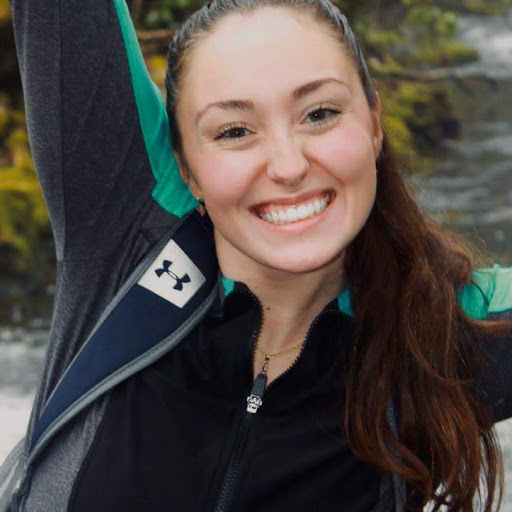Julia Drew Greer
age ~61
from Berkeley, CA
- Also known as:
-
- Julia D Greer
- Julia G Greer
- Julia G Collins
- Julia Greer Revocable
- Julia Greer Revocable Trus
- Julia D Greers
- Phone and address:
-
911 Cedar St, Berkeley, CA 94710
(510)5289547
Julia Greer Phones & Addresses
- 911 Cedar St, Berkeley, CA 94710 • (510)5289547
- 1522 Bonita Ave #B, Berkeley, CA 94709 • (510)6443581
- Albany, CA
- 225 Hawk Ln, Palmdale, CA 93551
- 6329 Colby St, Oakland, CA 94618
- Salix, IA
- Glendale, CA
- Alameda, CA
- Los Angeles, CA
- Fort Belvoir, VA
Work
-
Company:Coblentz, Patch, Duffy & Bass LLP
-
Address:One Ferry Building Suite 200, San Francisco, CA 94111
-
Specialities:Litigation - 25% • Intellectual Property - 25% • Antitrust / Trade Law - 25% • Contracts / Agreements - 25%
Education
-
School / High School:University of California, Berkeley School of Law
Ranks
-
Licence:California - Active
-
Date:1999
Lawyers & Attorneys

Julia Drew Greer, San Francisco CA - Lawyer
view sourceAddress:
Coblentz, Patch, Duffy & Bass LLP
One Ferry Building Suite 200, San Francisco, CA 94111
(415)7725784 (Office), (415)9891663 (Fax)
One Ferry Building Suite 200, San Francisco, CA 94111
(415)7725784 (Office), (415)9891663 (Fax)
Licenses:
California - Active 1999
Education:
University of California, Berkeley School of Law
Graduated - 1998
Western Kentucky University
Graduated - 1987
Graduated - 1998
Western Kentucky University
Graduated - 1987
Specialties:
Litigation - 25%
Intellectual Property - 25%
Antitrust / Trade Law - 25%
Contracts / Agreements - 25%
Intellectual Property - 25%
Antitrust / Trade Law - 25%
Contracts / Agreements - 25%
Associations:
Bar Association of San Francisco - Member
State Bar of California - Member
State Bar of California - Member
Us Patents
-
Fabrication Of Vertically Aligned Metallic Nanopillars
view source -
US Patent:8299341, Oct 30, 2012
-
Filed:May 13, 2010
-
Appl. No.:12/779780
-
Inventors:Julia R. Greer - Pasadena CA, US
Michael Burek - Waterloo, CA -
Assignee:The California Institute of Technology - Pasadena CA
-
International Classification:H01L 21/44
-
US Classification:977712, 977721, 977722, 977816, 438479, 438679, 438681, 438678, 257E51043
-
Abstract:Solid and hollow cylindrical nanopillars with nanoscale diameters are provided. Also provides is a method of making such nanopillars using electron beam lithography followed by the electroplating.
-
Annealing A Buffer Layer For Fabricating Electronic Devices On Compliant Substrates
view source -
US Patent:8465795, Jun 18, 2013
-
Filed:May 20, 2008
-
Appl. No.:12/123732
-
Inventors:Rene Lujan - Sunnyvale CA, US
William S. Wong - San Carlos CA, US
Julia Rosolovsky Greer - Pasadena CA, US -
Assignee:Palo Alto Research Center Incorporated - Palo Alto CA
-
International Classification:B05D 5/12
B05D 3/02 -
US Classification:427 971, 4273741
-
Abstract:A method of forming a thin-film layered electronic device over a flexible substrate comprises the steps of depositing a buffer layer over the flexible substrate, heating the substrate and buffer layer stack to a temperature at which plastic deformation of the buffer layer takes place, cooling the stack, then forming the thin-film electronic device over the plastically deformed buffer layer without further plastic deformation of the buffer layer. The heating and cooling to cause plastic deformation of the buffer layer is referred to as annealing. The thin-film electronic device is formed by a process according to which all steps are performed at a temperature below that at which further plastic deformation of the buffer layer occurs. In-process strain and runout are reduced, improving device yield on flexible substrates. An optional metal base layer may be formed over the buffer layer prior annealing.
-
Fabrication Of Nano-Twinned Nanopillars
view source -
US Patent:8557507, Oct 15, 2013
-
Filed:Nov 7, 2011
-
Appl. No.:13/291002
-
Inventors:Dongchan Jang - Pasadena CA, US
Julia R. Greer - Pasadena CA, US -
Assignee:California Institute of Technology - Pasadena CA
-
International Classification:G03F 7/26
-
US Classification:430315, 430320
-
Abstract:Nanopillars with nanoscale diameters are provided where the nanopillar has uniformly aligned nano-twins either perpendicular or inclined by 1-90 to the pillar-axis with no grain-boundaries or any other features.
-
Nanoindenter Tip For Uniaxial Tension And Compression Testing
view source -
US Patent:20100281963, Nov 11, 2010
-
Filed:Dec 26, 2007
-
Appl. No.:11/964450
-
Inventors:Julia R. Greer - Pasadena CA, US
-
Assignee:California Institute of Technology. - Pasadena CA
-
International Classification:G01N 3/42
-
US Classification:73 82
-
Abstract:The invention is an indenter tip that is modified to permit both compression testing and tensile testing on samples having dimensions smaller than approximately 1 μm. The modified indenter tip has both a surface that can be used to apply compressive forces, and tines that can be used to engage a free end of a specimen to be tested in tension. The apparatus used to perform the tests includes elements of a scanning electron microscope that permit visualization of the specimen to be tested and the modified indenter tip, so as to permit appropriate alignment and engagement of the same. The apparatus also includes elements of a microindenter that provide mechanical manipulation of the relative position and orientation of the modified indenter tip and of the specimen to be tested, as well as the necessary controls and instrumentation to perform the test and to collect, record and manipulate data.
-
Nanotextured Surfaces And Related Methods, Systems, And Uses
view source -
US Patent:20120181346, Jul 19, 2012
-
Filed:Jan 13, 2012
-
Appl. No.:13/350734
-
Inventors:Harold F. GREER - Pasadena CA, US
Julia R. GREER - Pasadena CA, US -
International Classification:A61L 9/04
B29C 59/02
C23F 1/00
C03C 15/00
B82Y 40/00 -
US Classification:239 1, 216 67, 216 24, 216 41, 264293, 239 34, 977887, 977888
-
Abstract:A method of controlling wetting characteristics is described. Such method includes forming and configuring nanostructures on a surface where controlling of the wetting characteristics is desired. Surfaces and methods of fabricating such surfaces are also described.
-
Thin-Film Electronic Devices Including Pre-Deformed Compliant Substrate
view source -
US Patent:20120205656, Aug 16, 2012
-
Filed:Apr 23, 2012
-
Appl. No.:13/453881
-
Inventors:Rene Lujan - Sunnyvale CA, US
William S. Wong - San Carlos CA, US
Julia R. Greer - Pasadena CA, US -
Assignee:PALO ALTO RESEARCH CENTER INCORPORATED - Palo Alto CA
-
International Classification:H01L 29/786
-
US Classification:257 57, 257E29273
-
Abstract:A thin-film layered electronic device, or array of devices, is formed over a layer structure comprising a flexible substrate, a buffer layer, and a metal layer. The layer structure is annealed to permanently deform the layer structure beyond its plastic deformation limit. The thin-film electronic device is formed thereover by a process according to which all steps are performed at a temperature below that at which further plastic deformation of the buffer layer occurs. In-process strain and runout are reduced, improving device yield on flexible substrates. The metal layer forms a first layer of the thin-film layered device, or array of devices.
-
Direct Current Spectroscopy (Dcs) Technique For In-Operando Cell Diagnostics And Anisotropic Resistance Monitoring
view source -
US Patent:20220336933, Oct 20, 2022
-
Filed:Apr 12, 2022
-
Appl. No.:17/718705
-
Inventors:- Pasedena CA, US
Julia R. GREER - Pasadena CA, US -
International Classification:H01M 50/569
-
Abstract:A method of interrogating an electrochemical cell includes: applying a positive direct current to the electrochemical cell for a first time period, wherein the positive direct current is characterized by a first magnitude; applying a negative direct current to the electrochemical cell for a second time period, wherein the negative direct current is characterized by a second magnitude; wherein the first and second time periods have a combined duration of less than 2 seconds; wherein the second magnitude is equal to or within 50% of the first magnitude; recording cell resistance data of the electrochemical cell during each time period; and analyzing the cell resistance data to determine at least one of: (i) state of charge of the electrochemical cell; (ii) state of health of the electrochemical cell; and (iii) the resistance anisotropy of the cell.
-
3D Printing Of Metal Containing Structures
view source -
US Patent:20220314183, Oct 6, 2022
-
Filed:Mar 31, 2022
-
Appl. No.:17/710456
-
Inventors:- Pasadena CA, US
Julia R. GREER - Pasadena CA, US
Max L. LIFSON - Pasadena CA, US
Michael A. CITRIN - Pasadena CA, US -
Assignee:California Institute of Technology - Pasadena CA
-
International Classification:B01J 13/00
H01M 4/48
G03F 7/004
G03F 7/00
B01J 6/00
G03F 7/032
C08G 65/00
C08K 3/28
G03F 7/20
H01M 4/133 -
Abstract:In an aspect, a method for making a metal-containing material comprises steps of: forming a metal-containing hydrogel from an aqueous precursor mixture using a photopolymerization; wherein the aqueous precursor mixture comprises water, one or more aqueous photosensitive binders, and one or more aqueous metal salts; and thermally treating the metal-containing hydrogel to form the metal-containing material; wherein the metal-containing hydrogel is exposed to a thermal-treatment atmosphere during the step of thermally treating; wherein a composition of the metal-containing material is at least partially determined by a composition of the thermal-treatment atmosphere during the thermally treating step.
Resumes

Julia Greer
view sourceMedicine Doctors

Julia B. Greer
view sourceSpecialties:
Internal Medicine, Gastroenterology
Work:
University Of Pittsburgh Medical Center Digestive Disorders Center
200 Lothrop St STE 3D, Pittsburgh, PA 15213
(412)6478666 (phone), (412)6476446 (fax)
200 Lothrop St STE 3D, Pittsburgh, PA 15213
(412)6478666 (phone), (412)6476446 (fax)
Languages:
English
Spanish
Spanish
Description:
Dr. Greer works in Pittsburgh, PA and specializes in Internal Medicine and Gastroenterology. Dr. Greer is affiliated with UPMC Mckeesport, UPMC Presbyterian and UPMC Shadyside.

Julia S. Greer
view sourceDescription:
Dr. Greer graduated from the Second Moscow Med Inst, Russian State Med Univ, Moscow, Russia in 1993. She works in Clarkston, MI and 2 other locations and specializes in Gastroenterology and Internal Medicine. Dr. Greer is affiliated with Providence Hospital.
Name / Title
Company / Classification
Phones & Addresses
Attorney , Partner
Coblentz Patch Duffy Bass Llp
Legal Services Office
Legal Services Office
1 Fry, San Francisco, CA 94111
(415)3914800
(415)3914800
Gastroenterology
Mark Devore, MD, PC
Medical Doctor's Office
Medical Doctor's Office
Wikipedia References

Julia R. Greer
News

From the Science Desk: Curiosity set to launch
view source- "We're entering a new era of materials science where material properties are determined not only by the microscopic makeup of the material but also by the architecture of the constituents," explained Julia Greer, associate professor of materials science and mechanics at Caltech.
- Date: Nov 24, 2011
- Category: Sci/Tech
- Source: Google
Youtube
Myspace
Googleplus

Julia Greer
Lived:
Pasadena, CA
Work:
California Institute of Technology - Professor
Education:
Stanford University
Tagline:
Assistant Professor of Materials Science and Mechanics at Caltech

Julia Greer

Julia Greer

Julia Greer (Snoop Lion)
Get Report for Julia Drew Greer from Berkeley, CA, age ~61







